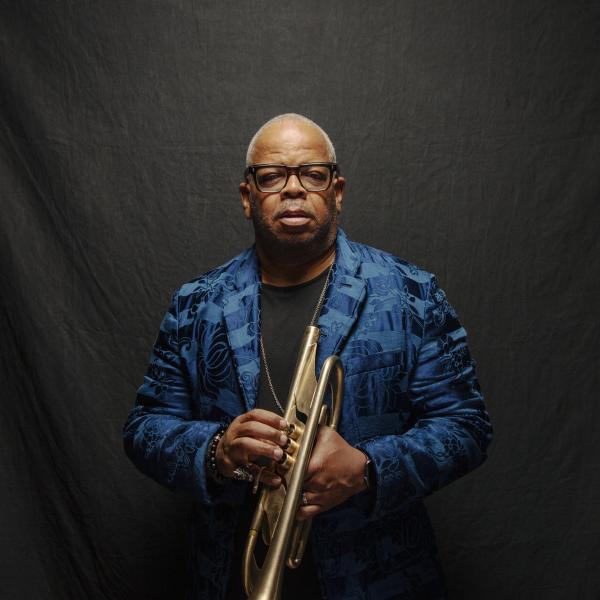Nate DiMeo: Listening to the Room

Nate DiMeo: This is the memory palace, I’m Nate DiMeo.
Adam Kampe: Actually, this is an audio story about the memory palace podcast and Nate DiMeo. I’m Adam Kampe.
Nate DiMeo created the memory palace in 2008 as a side project and now it’s his full-time job. In merging three things he loves—writing, sound, and music—DiMeo tells moving, short stories about episodes from American history. You’d be hard-pressed to listen to his work and not call it art, a term generally not associated with podcasts. So it makes sense The Metropolitan Museum of Art chose him to be the 2016-17 artist-in-residence—the first podcast producer selected for this honor. For a year, he’ll craft memory palace-like stories about art in The Met, focused on the American Wing, to enhance the visitors’ experience. Like this one about Arabella Worsham-Huntington. Nate DiMeo.
Nate DiMeo: It’s an amazing story. She was a single mom who found her way into the circle of this railroad baron. And she later became his wife and became Arabella Huntington. And this is the room that she was given the opportunity to kind of like design for herself and make her own space. And it’s this dressing room that she lived in as she was in the process of going from being sort of a humble woman living a humble life into being a pillar of New York Society.
<Arabella Worsham was 17 when she came to New York in 1868 with nothing in her pocket. Or she was 15, and it was 1865. There's a lot we don't know about the early life of the woman who got dressed in this room. And it seems she may have wanted it that way. She told some people she was born in Virginia. Others it was Alabama. There are stories that say she was married to a Mr. John Worsham when she came to New York in 1860-something. Some stories say he died, leaving her a heartbroken widow. Others that he abandoned her and their infant son. Still others say they were never married at all, and maybe all of it, all of these stories, were a useful fiction.>
Adam Kampe: Nate DiMeo
Nate DiMeo: So last summer or so, I got an e-mail from the folks at The Met. And on the one hand I think that Limor Tomer was the head of Arts & Lectures. I think she was angling to get me to be the artist-in-residence. But she knew it might be a heavy lift because the artist-in-residence is typically like a choreographer or a jazz guy or whatever it might be. And so there aren’t a lot of people who think of podcasts as art unto itself, you know, and I do. And I was really pleased to find out that someone at a place like The Met did too. And because they were having this fairly ambitious thing about the furniture of the gilded age, and they had unearthed some academically and art historically interesting stuff about this particular furniture designer. And they had just essentially purchased a period room that they turned out that they had room to install within their run of period rooms in the American wing. And they thought it would be kind of a nice thing to do, to do a memory palace story that would try to make that come alive and make it be the kind of thing that you wouldn’t just kind of pass by. So I hopped at the chance, ‘cause I love The Met and I love the opportunities and I love frankly that someone would call and would talk to me about my podcast with the assumption that, “Oh, you’re an artist.” That was exciting to me.
I was speaking with the curator of the room in the exhibit. You know, I’ll talk to any expert about anything. Because I just, like, I just get excited about people’s expertise and I just like, just kept like drilling. Like, “Tell me what you love about this room. Tell me what it is. Tell me what it is.” And after a while, like, you know, I knew that the woman that occupied this room had an interesting back story. But until, you know, I kind of had this epiphany about the room as what is a dressing room, but it’s a room where you get ready to kind of perform a self, you know, it’s a room where you get ready to go out into the world. And, this woman built this room and owned this room and designed it herself at a moment in her life when she was becoming the woman she would become, you know. And once I kind of had this notion of that this is a story about someone who has gained a very rigged system. Once you sort of had that idea, then the story became clear.
<Because here's the deal, Arabella was a single, teen mom in New York. She had no pedigree, her father died when she was nine. Her mother ran a boarding house. She had no connections, no entree into polite society. No prospects. She was, in short, the sort of woman who would never get to get dressed in beautiful clothes in a beautiful room like this. Nevermind, get to build a room like this to her taste, to her whim, in 1881. A room so beautiful, it is rebuilt here at The Metropolitan Museum, a hundred and forty-ish years later. And somehow, she made sure we don't know just how, or just when. She met a man named Collis Huntington. A titan of industry who built his vast fortune, building the trans-continental railroad. He was broad-chested, and kind-eyed, and married....>
Nate DiMeo: And so if you go to The Met right now, first of all, you can just listen. I think a lot of people do, they just listen to the podcast there. There’s this plaque and it says, you know, among the artworks listed is the room itself and then like a podcast story about the room itself.
You know, I hold the memory palace-- it’s not just like I want everything to be great. It’s not just that. When it all comes down to it, I have a real kind of strict sense that it might be difficult to explain, of what a memory palace story is. And to me it’s like it’s something that, like, A) I kind of need to be moved. And B), it has to be about something beyond the subject itself.
Here I am sort of making these idiosyncratic history stories, where I am actively striving to make beautiful things every time or I am, you know, attempting to make art. You know, it’s not, this is not news you can use. It’s not infotainment. Even though so many of the podcasts that I enjoy listening to are those things, are beautiful versions of those things. With the story of the Worsham Gallery, there might not be a metaphor for my life there, but there is this kind of sense that what the story’s about is a woman who is in the process of becoming, who she dreamed of being. And the door is about to sort of open for her and she’s gotten herself there. And that’s where you find the tension in the story, that’s where you find the, “What does this character want?” And that’s when those interesting facts about what happened in this room start to become a story
Nate DiMeo: <Let's get back to this room, where she used to get dressed, before all of that becoming. Back when Arabella Huntington was till calling herself Arabella Worsham. Whether that was true or not. When she, who had come to this town as a teenager, with nothing, no pedigree, no prospects, now had a patron - possibly a lover. And a grand home on 54th Street, she'd bought with his money. And a vision for that home, and a room of her own. This room. Here. Where she would put on fine things she once could have only dreamed of wearing. And this woman built this room in 1881. She had a visionary designer. Had artisans and laborers. Many, many, men at her command. She wanted the satin wood, and here is the satin wood on the door frames and the drawers and the cabinet doors. Shipped across the Pacific, hauled across the continent and the backs of railroad cars on tracks likely built by the man who gave her the money to build this room. She wanted cherubs, and here are cherubs, each painted by hand up by the ceiling. Or carved by hand here by the door. There, framing the armoire. Carved in purple heart, a wood from a flowering tree felled in the forests of Brazil or French Guyana. Now, here in this fine room, for the pleasure of one young woman from Virginia, or Alabama, or wherever she was really from. She wanted butterflies and blossoms, fleeting springtime. And there is spring forever in the basement beneath the mirror by the window. She wanted flowers, winding vines, climbing the closet doors with their impossible symmetry, twisting and turning in accordance with her wishes, into something new and improbable. But seemingly natural, and effortless. As though they'd sprung from the soil from mere seed. And water and air.
Those are silver handles there, on the door, at the sink. Sure to tarnish one day, but not tonight, not on this night, that I'd like you to imagine now.
1881, 1882. When Arabella Worsham, nee Yarrington, not yet Arabella Huntington, not yet 30 years old, would come into this room. From the bedroom, from the door you may have just walked through, and open up her closet of dresses. Pull drawers of perfumes and hairpins and pearls. Like the ones that hang from the hands of the hand painted cherubs. And she'd get ready for the evening. She could look out the window that once looked toward Park Avenue, where other fine homes were beginning to rise even taller. But not yet tall enough to block her view of the river, and the boroughs beyond. Beginning to fill with new immigrants, new arrivals to the city who'd come here with something like nothing. Like her, but who were not like her. Who hadn't pulled off this trick of building a life out of stories. Who weren't sitting in this room on this night, getting dressed for the evening, for the opera, for some fine party with fine people. Someday, she would marry a railroad magnate, someday she would build grand estates and acquire Vermeers and Rembrandts and the only Gainsborough everyone knows. Someday she would criss-cross the continent, and the Atlantic dozens of times. Someday she would be known as the richest woman in the world. But not yet. On this night, she would get ready for the evening, and she would step out of this room, and into the world.>
Adam Kampe: Nate DiMeo explains what a memory palace is historically speaking, and why he does what he does.
Nate DiMeo: It’s a mnemonic device that was invented by some Greek whose name I forget, ironically. But the notion was that way back in the day, reciting long, epic poems or making long speeches was a kind of mode of the day of entertainment and education. And so he would, take his students, whoever this forgotten Greek is, forgotten to me, lots of people know. He would take them down to like the local market and say, “Okay. I want you to remember your speech. And so when you think, ‘Fourscore and seven years ago,’ today I want you to be looking at that sandal vendor. And then when you move on to the next section, I want you to look at this fruit cart. And then later on, when you have to get up on stage or at the dais or whatever, rather than remembering the words, which might not feel like they have any connection, you know, to yourself, you instead recall images and recall specifically images that are tied to place.” And the words sort of fall out.
I always like that idea of creating a kind of a shared memory palace between me and the listeners. And mine might take place in my home that I grew up in in Providence and yours might take place in the home that you grew up in North Carolina or whatever. But I like the notion of this kind of virtual space. Where I try to find stories of the past, and, sort of, like illuminate something about the way we live now.
Adam Kampe: That was the creator and host of the memory palace, Nate DiMeo, on his role as the artist-in-residence at the Metropolitan Museum of Art. The memory palace is a proud member of the reputable Radiotopia podcast network from PRX. If you like what you heard from the memory palace, be sure to check out their full line-up. For the National Endowment for the Arts, I’m Adam Kampe.
Music credits:
Excerpt of “Dog and Pony Show,” “Happiness Is,” “Loll,” and “Stepping Intro” composed and performed by Podington Bear from his Sound of Picture Production Library, and found on WFMU’s Free Music Archive. Used courtesy of Creative Commons.
Excerpt of “Dark Becomes Light” from the album, Forward/Return, composed and performed by The Album Leaf and used courtesy of the band and by permission of SONGS Music Publishing (BMI + ASCAP)
For years, Nate DiMeo has painted stories lifted from American history for his podcast, The Memory Palace. Except instead of a brush, he uses his voice, music, and a microphone. It’s like he takes a Polaroid of an event or a location, say the Vietnam War Draft or the first gay bar in America, and then he takes us inside that photographed image so we can hear and feel what it might have been like to live the experience of that place and time. The stories themselves are works of art, and he’s our digital tour guide. So it makes sense the Metropolitan Museum of Art chose him to be the 2016-17 artist-in-residence—the first podcast producer selected for this honor. In this piece, we’ll hear excerpts from DiMeo’s first commissioned MET story, “Gallery 742,” and his thoughts on the experience and The Memory Palace.




